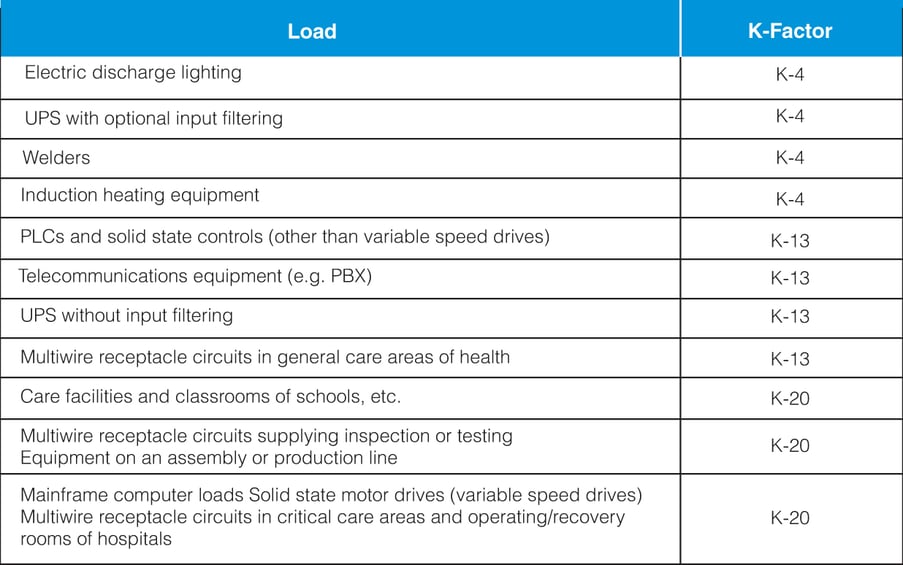
At Fuji Electric we develop products that maximize energy efficiency and lead to a responsible and sustainable society
Power Quality
Power distribution systems, ideally, should provide their customers with an uninterrupted flow of energy with a clean sinusoidal voltage at the contracted voltage level (132kV, 66kV, 33kV, 11kV, 415V) and frequency (50Hz in India). However, in practice, power systems face a variety of challenges either from generation, Transmission & Distribution (T&D) or even within a customer facility which impacts the quality of power. These power quality issues can affect the uninterrupted operation of customer loads, but the safety-related issues can reduce the life of the connected loads and electrical equipment. A customer having numerous nonlinear loads can also affect the quality of power supply and the purity of the voltage waveform is lost which can affect other loads within the facility or even outside the customer facility. Apart from nonlinear loads, some system events, both usual (e.g. capacitor switching, motor starting) and unusual (e.g faults) could also inflict power quality (PQ) problems.
Importance of Power Quality
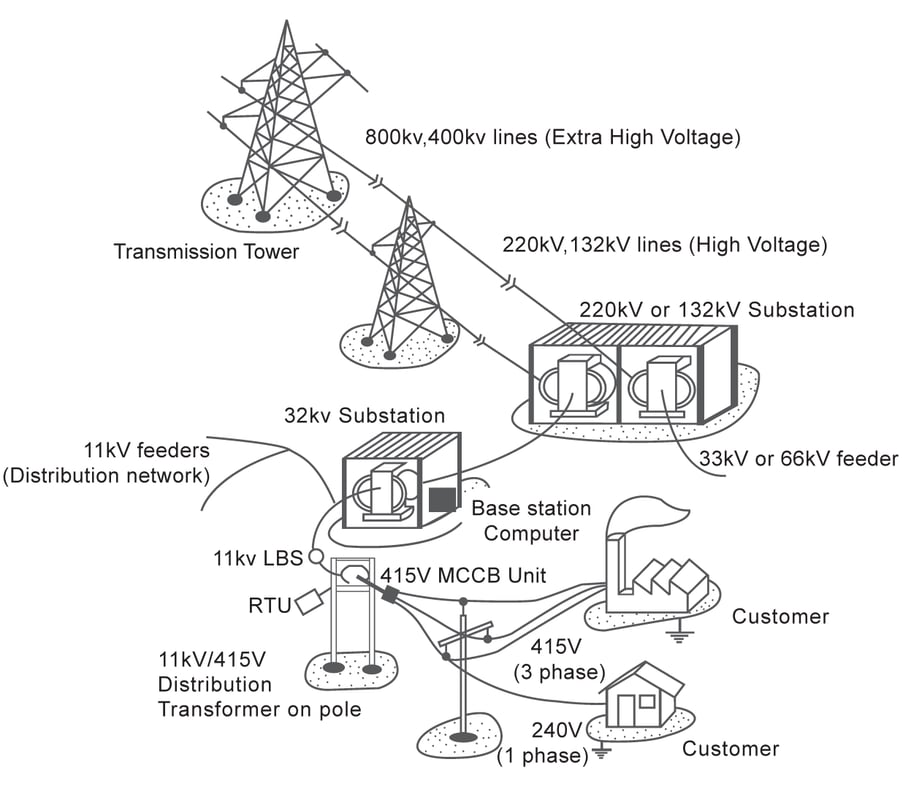
Figure 1 Power generation to Distribution
The increased sensitivity of the vast majority of processes and equipment (industrial, commercial, healthcare, services and even residential) to PQ problems turns the availability of electric power with quality is a crucial factor for competitiveness in every sphere of business activity. Today any interruption of business operations due to poor power quality has a direct impact on the profitability of an enterprise. The most critical areas are the continuous process industry and the information technology services. The increasing use of automation and electronic devices also make business enterprises today more susceptible to the power quality issues.
Power quality disturbance can be defined as the deviation of the voltage and the current from its ideal sinusoidal waveform. Good power quality is of utmost importance in order to provide uninterrupted power to the service sectors as well as others for economic growth and also to prevent equipment damage.
Harmonic Current Distortion
There are a number of electrical devices that have nonlinear operating characteristics i.e even when the applied voltage is sinusoidal in nature, the current drawn by the device is nonsinusoidal in nature. These nonlinear devices used in power distribution circuits create nonlinear currents and which subsequently causes voltage distortions. These nonlinear currents and voltages have been generally referred to as harmonic currents and voltages. The proliferation of electronic switching devices in modern equipment has resulted in a significant increase in the amount of harmonic pollution in the electrical distribution systems. These harmonics if disregarded or undetected may cause harmonic resonant conditions which could present system operating problems resulting in complaints from customers and reduced life of power equipment as well as lower efficiency and performance. Harmonic currents and voltages can cause many unfavorable effects on the power system itself and the connected loads. Malfunctioning of electronic equipment, capacitor failure, transformer and neutral conductor overheating, excessive heating in rotating machinery are some of these effects.
Harmonic currents are generated by non-linear loads such as,
- LED, CFL Lighting
- Power supply units (computers)
- Variable speed drives
- SCR Rectifier UPS
- Arc furnaces & SCR temperature controllers
- Battery chargers & Rectifiers
Power Quality Issues and Causes
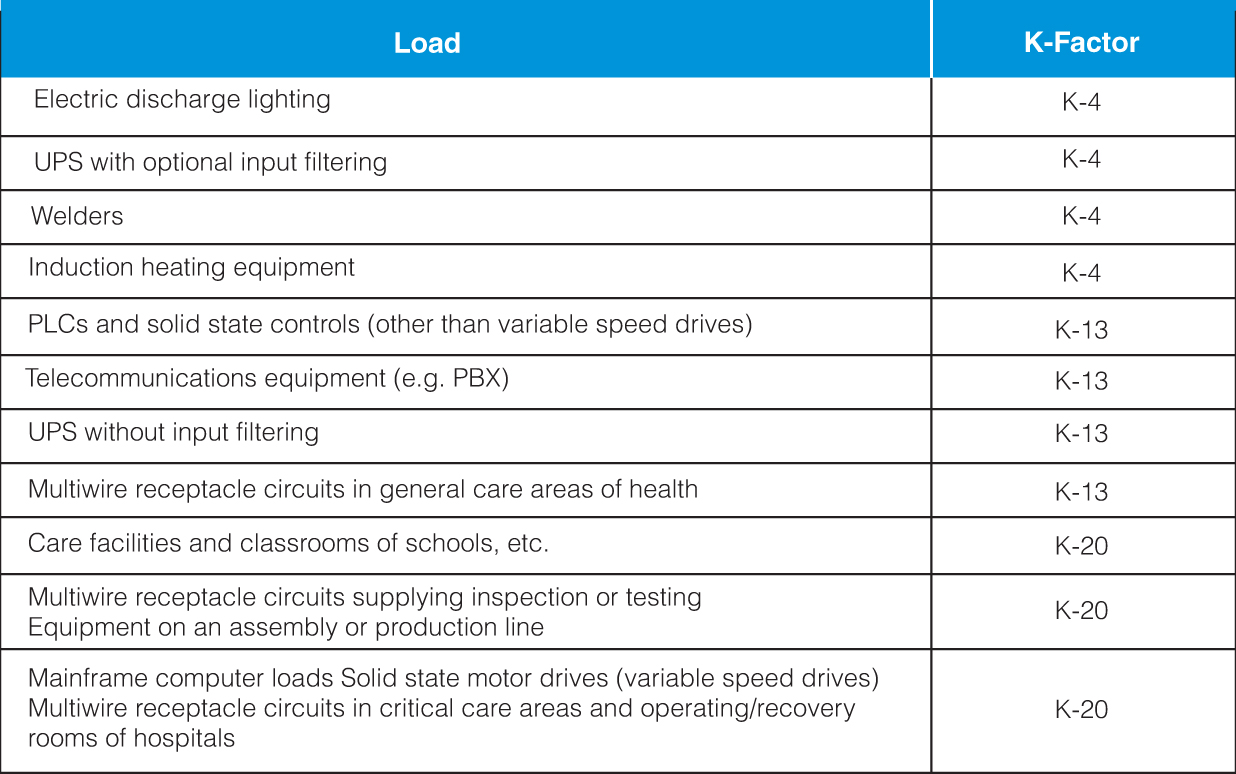
Harmonic Current Distortion
Positive sequence harmonics ( 4th, 7th, 10th ,…….(6n+1) th) have the same phase rotation as the fundamental component. These harmonics circulate between the phases.
Negative sequence harmonics ( 2nd, 5th, 8th ………(6n-1) th ) have the opposite phase rotation with respect to
the fundamental component. These harmonics circulate between the phases.
Zero sequence harmonics ( 3rd, 6th, 9th, ….. (6n-3) th ) do not produce a rotating field. These harmonics circulate between the phase and neutral or ground. These third order or zero sequence harmonics, unlike positive and negative sequence harmonic currents, do not cancel but add up arithmetically at the neutral bus.3rd order harmonics can create overheating in the neutral conductor.
Higher frequency harmonics are transmitted by coupling capacitors. They create EMC issues in sensitive electronic equipments.
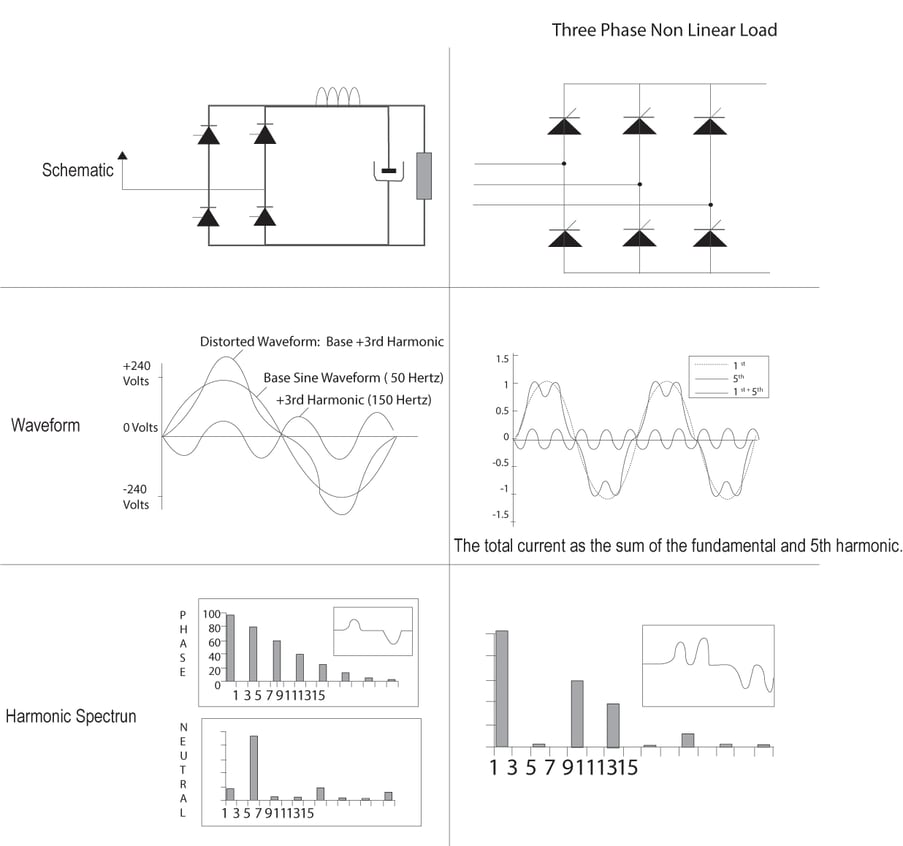
Figure 2 Harmonic Current Waveform & Spectrum
Grid Side Impact of Harmonics
- Reduction in efficiency of power generation, transmission, and utilization
- Ageing of the installed electrical plant components and shortening of their useful lives
- Reduced ability to transfer power (kW) through existing T&D infrastructure and transformers.
- Higher T&D and distribution transformer losses.
- Overloading, overheating and failure of power factor correction capacitors, distribution transformers and neutral conductors.
- T&D capability in many parts of India has to be derated by upto 10% due to increasing level of harmonics generated from consumer side of meter.
- Harmonics result in capacity reduction and higher fuel consumption for DG Sets or Captive Power Plants.
Customer Side Impact of Harmonics
- Overheating of transformers, motors and cables
- Reduction in available capacity of transformers and switchgear
- Excess neutral currents
- Power factor capacitor failures
- Spurious operations of fuses, circuit breakers and other protective equipment
- Increased failure of electronic devices
- Capacity limits on stand by generators and UPS systems
- Higher losses in transformers, motors, cables leading to higher power bills.
Impact of Harmonics on Power Factor
The true power factor is the product of displacement(PF disp) & distortion power factor(PF dist). If the harmonic distortion is more in the system, then the true power factor cannot be improved with just power factor correction capacitors. This can result in power factor penalties, loss of power factor incentives and higher electricity billing in locations with KVAh billing.

Impact of Harmonic Current on Neutral Conductor & Its Mitigation Techniques
Most of the buildings or office using nonlinear loads like computers, servers etc. the three phase building wiring consists of 3 hot (or phase) conductors, a ground conductor, and a neutral conductor. Single phase loads are connected between the different hot conductors and the neutral conductor. Therefore, the neutral conductor serves as the “common” return for all of the single phase load currents.
These single phase loads produce harmonics and the harmonic currents of each phase get added up and flow through the neutral cable of the distribution system (as shown in fig 3). With the use of more nonlinear loads, the harmonic in the electrical system has increased. These harmonic currents can create the overload in cables and the upstream infrastructure.
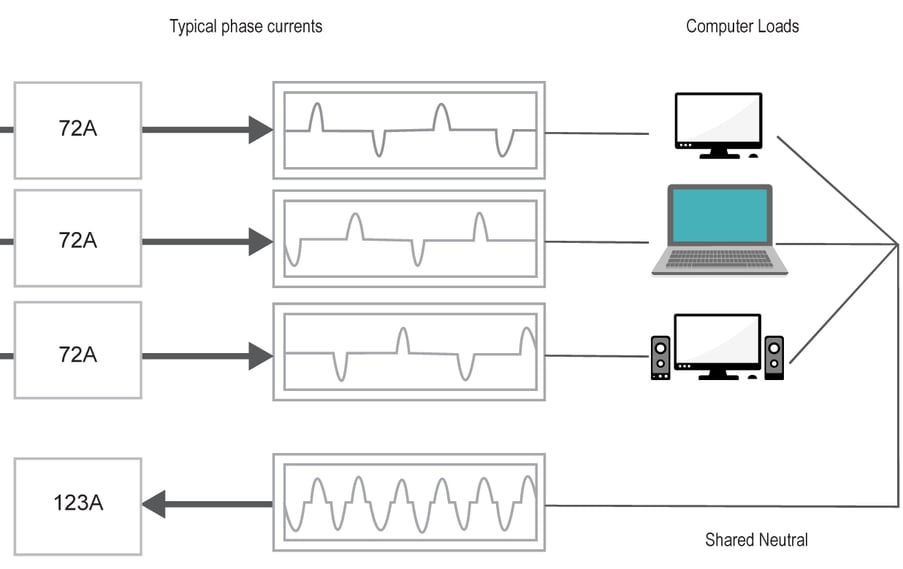
Harmonic Current on a Three-phase Distribution System
Computers generate a substantial amount of 3rd harmonic current. Due to the mathematical phase properties, third harmonic currents add instead of canceling out on the neutral wire.
The maximum amount of neutral current for a personal computer load is 173% of the phase, although few systems reach this theoretical limit
In order to avoid the overheating of the neutral cable, the neutral cables have to be double sized to take care of the triple harmonic currents without overheating.
Instead of oversizing the neutral, a K rated Delta Star Isolation Transformer or a Zig-Zag Winding Transformer can be used to isolate the harmonic producing loads.
K rated transformers will be able to handle the heat generated by harmonic loads. The winding conductors are specially configured and sized to minimize heating due to harmonic load currents. Cores are specially designed to maintain flux core density below saturation due to distorted voltage waveforms or high line voltage.
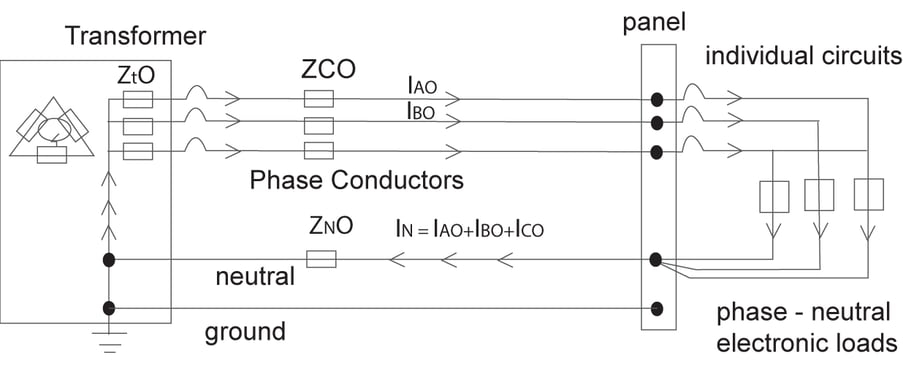
Figure 4 Delta Star Transformer
The K rating to be used for different applications is listed in the below table
The Zig-Zag connection is used in transformers to trap triple harmonic (3rd, 9th, 15th, etc.) currents. Here, we install Zig-Zag Transformers near loads that produce large triple harmonic currents. The windings trap the harmonic currents and prevent them from traveling upstream, where they can produce undesirable effects. While both delta star and Delta Zig-Zag can help eliminate triple harmonics in the primary circuit, there is no phase angle displacement between the primary and the secondary circuits in a Delta Zig-Zag Transformer unlike a conventional Delta Star Transformer.
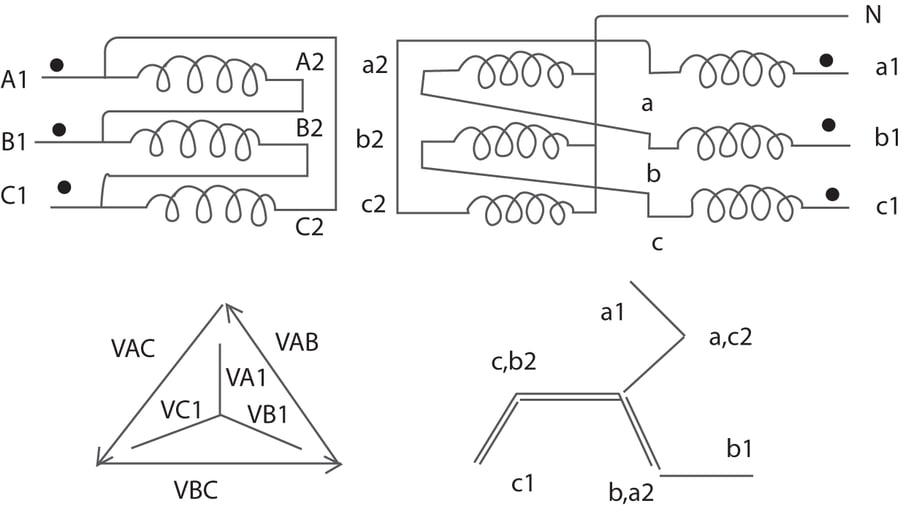
Figure 5 Zig-Zag Transformer Coil Connections
Choice of Protection for Power Quality Issues
Like Voltage variation (Sag, Swells and Power Failures.)
Choice of power protection depends on site power conditions & cost of downtime for each individual customers based on the number of power quality events experienced by a site superimposed on the voltage tolerance curve of equipment.
If the site has chronic issues on lower voltage which goes below 80% of nominal, then the site must be protected with a Servo Controlled Voltage Stabilizer or OLTC (On Load Tap Change Transformer).
If a site experiences voltage drops below 70% or momentary outages greater than 20ms, then the equipment will malfunction unless protected by a UPS (Uninterruptible Power System)
UPS is designed typically only for 10-15 minutes of backup to optimize battery cost. UPS acts as a backup source till DG is turned on.
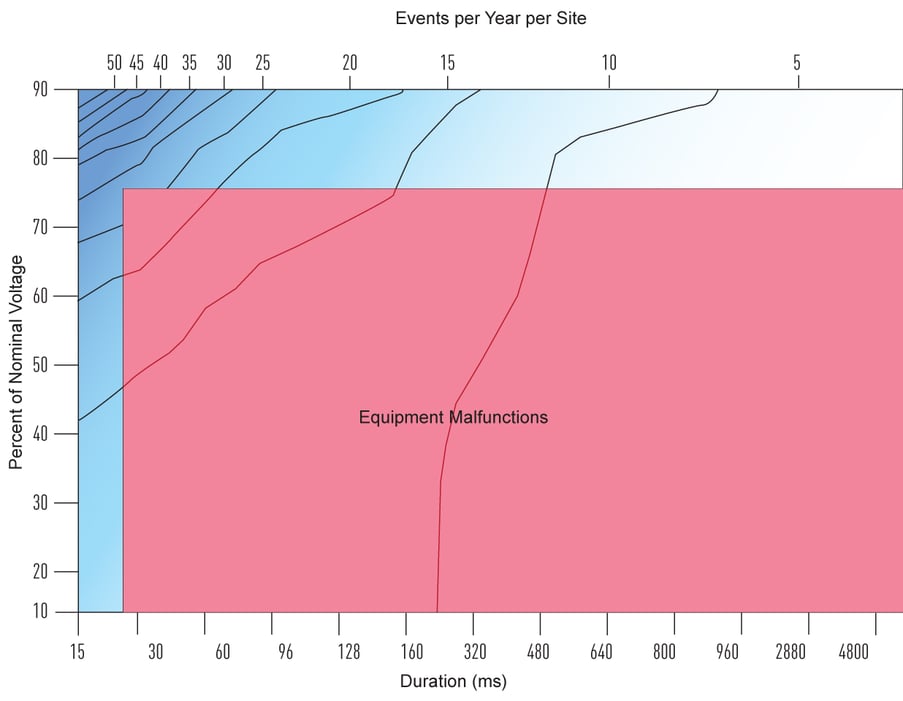
Figure 6 Voltage Tolerance Curve of Equipment
UPS system has become a vital component in managing the critical power infrastructure and to guarantee the availability of power for the critical loads in any environment for multiple applications. There is also a growing demand to optimize the performance, energy efficiency and the total cost of ownership of UPS System without compromising the uptime or the reliability of the electrical infrastructure.
Power Quality
- Importance of Power Quality
- Harmonic Current Distortion
- Power Quality Issues and Causes
- Harmonic Current Distortion
- Grid Side Impact of Harmonics
- Customer Side Impact of Harmonics
- Impact of Harmonics on Power Factor
- Impact of Harmonic Current on Neutral Conductor & Its Mitigation Techniques
- Harmonic Current on a Three-phase Distribution System
- Choice of Protection for Power Quality Issues
 China
China Europe
Europe France
France Hong Kong
Hong Kong Indonesia
Indonesia Japan
Japan Singapore
Singapore Thailand
Thailand USA
USA
